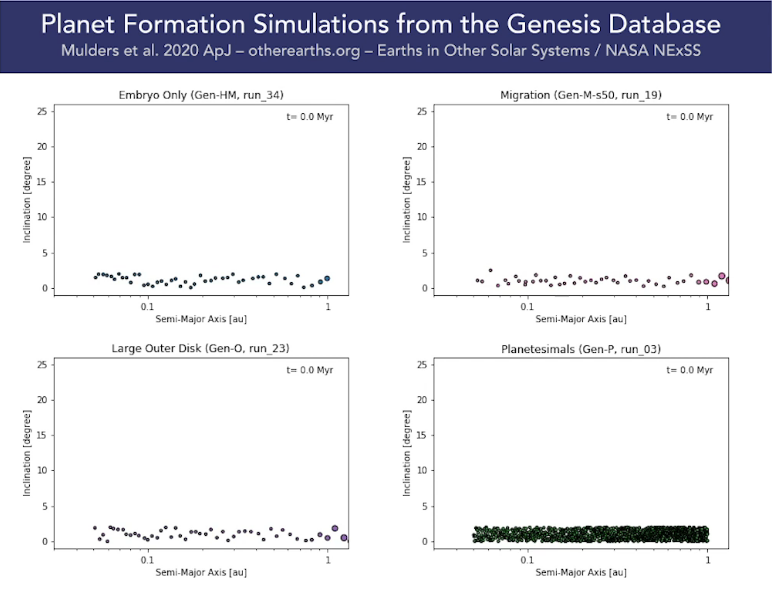The key goal of EOS is to advance our understanding of the formation of habitable planets. As an unusually large and ambitious program, EOS is in a rare position to successfully integrate interdisciplinary knowledge on planet formation – that is, to combine constraints from a wide range of sources: from meteoritic evidence, from observations or pre-stellar and circumstellar material, throug studies of planet-forming disks, to the observations and population-level knowledge on exoplanetary systems.
We now reached a major milestone: Our first comprehensive library of simulated planetary systems is out! Our Genesis Database includes the formation and accretion histories, and final architectures, of 600 simulated planetary systems. For each of the planets in each of the system we stored its collision history, orbital elements and their evolution, as well as how much mass it has accreted and where that mass was coming from. This latter is important, as planets are “what they eat”: worlds that accrete mass from the icy outer disk will have higher adbundance of ice-forming elements – mainly, water.
The paper describing the Genesis Database (Mulders, O’Brien,Ciesla, Apai, Pascucci (2020)) has been accepted today and it describes both the N-body dynamical models that were used in building the simulations as well as the emerging worlds and systems.
The Genesis Database is not just the end result of a four-year effort by our EOS team but, more importantly, the beginning of establishing our very large, open-access, detailed library of planetary systems. This library can be used in multiple ways: For example, one may study how the initial conditions of planet formation impact the emerging planetary systems (Will a more massive disk result in more possibly habitable planets?). But the Genesis Database can also be used “in reverse”, to find possible formation pathways for individual observed planetary systems.
In addition to the scientific value of the Genesis Database, it is also fun to explore the many different ways planetary systems can form! Our Genesis Database page contains visualizations for the stages of the planet formation process.
Building up the Genesis Database was a very large-scale effort led by Gijs Mulders, Dave O’Brien, Fred Ciesla, Ilaria Pascucci, and Daniel Apai. We are excited to have this tool ready and available to the community and look forward to its applications!

